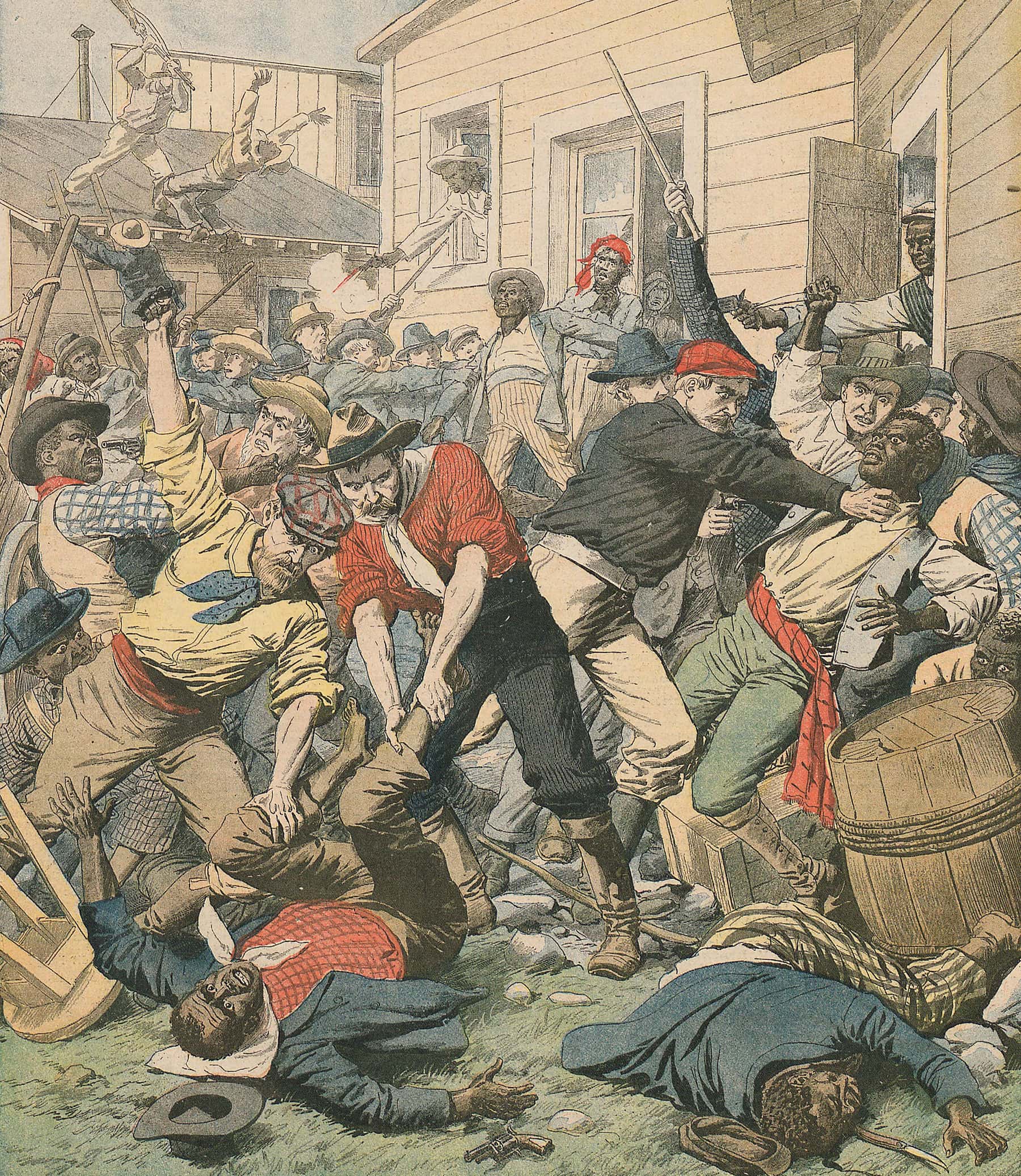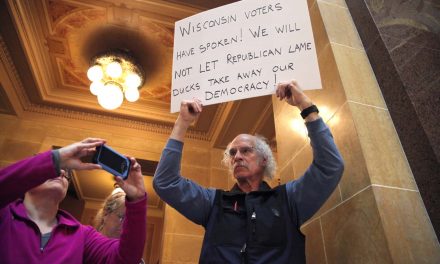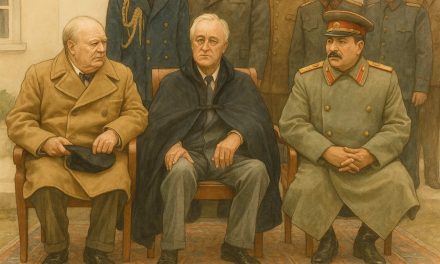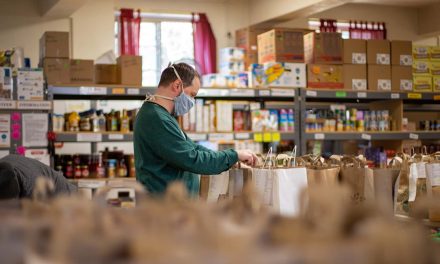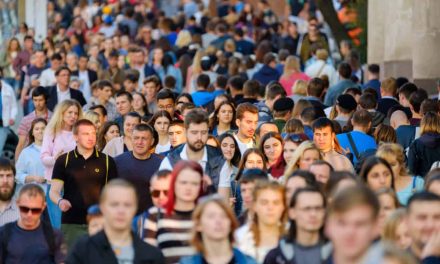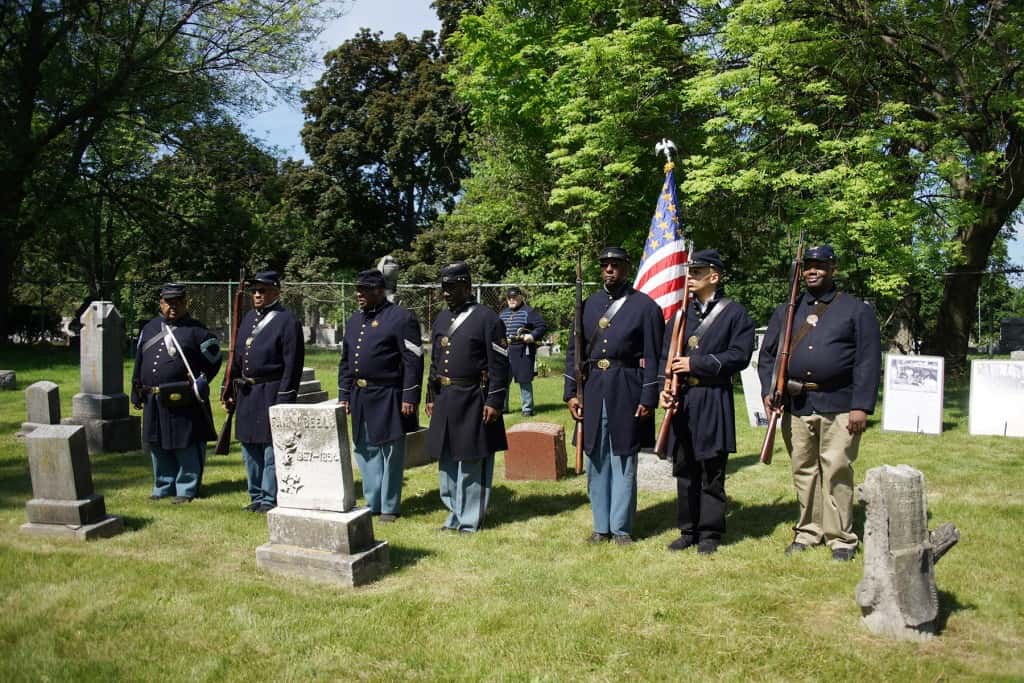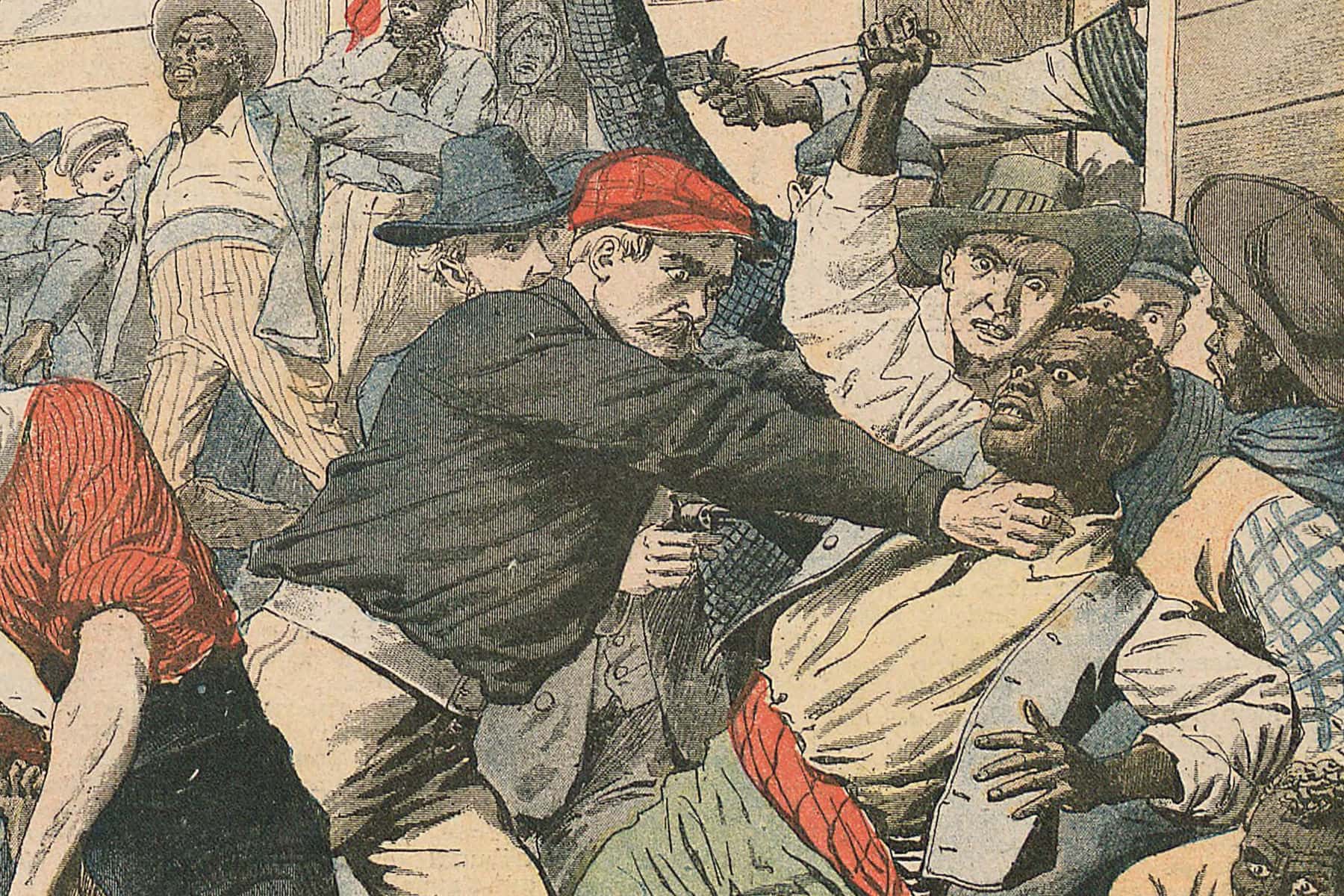
On Election Day a century ago, a white mob swept through a tiny Florida citrus town after a black man showed up at the polls to vote. Over two days of terror, the mob set fire to homes and drove black residents from their community. It was one of the bloodiest days in American political history, with the number of deaths remaining in question — some estimates as high as 60.
It must have seemed like a lifetime ago to Julius “July” Perry since he first arrived in Ocoee. More than thirty years prior he hopped off that mule-drawn wagon after a multi-day trip from Travelers Rest, South Carolina. The teenager overflowed with enthusiasm for the opportunities post-Reconstruction era Florida would bring.
July and his traveling companions, Mose Norman and Valentine Hightower, walked through the small but bustling downtown of the 1880s village and set their eyes on the pine tree-lined Starke Lake for the first time. They had little but their dreams and a strong work ethic.
Though the shadows of the Confederacy still lingered in Central Florida long into the 1900s, pioneer Ocoee was a model of a post-slavery economically integrated Southern town.
The next three decades went well for the Palmetto State transplants. Very well in fact. With a thriving Black middle class beginning to emerge in Ocoee, these three friends were perhaps its most prosperous sons. By then each were owners of multiple large tracts of farmland on the north side of town and had attained wealth and status coveted even by local whites.
To be sure, despite the relative tranquility and economic cooperation, there was still a prevalent undercurrent of racism in Southern society. In the cities and towns across Florida, distinct geographic lines had been drawn between the Black and white communities. Having business dealings with the “inferior race” was one thing, but having social and religious cross-over was still many decades away.
Ocoee was founded in the 1850s along the western banks of the pristine Starke Lake, as a camp for laborers working the farms around southern shores of Lake Apopka. A village soon grew up around the camp and became what is now the downtown historic district.
By 1920 there were just over 1,000 residents of the unincorporated town. Almost half of them were Black. In fact, the African-American population grew so large that two distinct Black communities developed, sandwiching the white-dominated downtown district.
The southern Black community — known locally as the Baptist Quarters — sprung up around the Friendship Baptist Church, an unpainted wood-framed church founded in 1896. The neighborhood was located just south of the intersection of Orlando Avenue and Bluford Avenue.Black
Cutting through the heart of downtown, Bluford Avenue is the main north-south artery through Ocoee. It was once part of Route 22, the snaking highway connecting Winter Garden to Orlando. In the years before Highway 50 made it a straight shot, it took about an hour by car to arrive in downtown Orlando from Ocoee.
Heading northward on Bluford from downtown and crossing the railroad tracks you find the northern Black community, commonly known as the Methodist Quarters. Its namesake Ocoee African Methodist Episcopal Church held its first services in 1890.
The church itself was likely located near what is now the City of Ocoee Central Park sports complex. Off of the nearby cul de sac on Anderson Place, there is a one-acre lot that was only recently memorialized as the former African-American cemetery. The graveyard lacks any surviving tombstones but was the likely location of the original AME Church.
It was the northern Methodist Quarters, the older of the two neighborhoods, where the three amigos built their homesteads. They were next-door neighbors even, all settling along what is now Apopka-Ocoee Road.
July Perry had become the well-respected godfather of the Black community. He served as a deacon in the church and the local labor leader or “straw boss.” It was said that anyone seeking to employ Black laborers needed to speak with him first. He was an admired, brave, and rational thinker. A sort of civil rights leader before there was a civil rights movement, he encouraged young Blacks to be educated and stand up for themselves as first-class citizens.
Perry’s wife (Estelle), his three sons and daughter (Coretha Perry Caldwell) lived on a large estate that included their home and several barns and outbuildings. They regularly opened their doors to anyone in need. If anyone was in trouble, they knew they could find advice and sanctuary in the Perry home.
Meanwhile, 59-year-old Mose Norman and wife Elisa liked to live a little more lavishly, enjoying the fruits of the years of hard work farming the 100-acre family orange grove. He drove around the brick-paved streets of downtown proudly sporting a fancy six-cylinder Columbia convertible with white sidewall tires, silver spokes, and elegant “storm curtains” instead of side windows.
Mose was definitely a well-known and prosperous man about town! It was said that he was once offered $10,000 for his groves — a huge sum for the time — but refused to take it.
Unlike his two friends, Valentine Hightower had a much more low-key personality. He knew well the dangers “negroes” opened up for themselves when they got too “uppity” in the still very white supremacist society of the time. He and his wife Jane lived a modest lifestyle and raised their kids to mainly keep to themselves. They answered politely when spoken to and preferred not to draw too much attention to themselves.
“My father was kind of humble,” Hightower’s son Armstrong recalled many decades later, “He didn’t take no chances on nothing.”
As the summer of 1920 rolled around, July was still feeling that same kind of optimism about the future that he had when he first arrived. And for good reason! Business was booming, his orange and cucumber harvests were bigger than ever, and the upcoming November election had everyone in the Black community hopeful that they might see the first-ever Republican elected to the Florida senate.
Opposite of today’s party paradigm, the political arena in the South of the early 20th Century was dominated by white Democrats — sometimes known as “Dixiecrats”. Conversely, the states north of the Mason-Dixon Line were Republican strongholds. Blacks, if involved in politics at all, were almost exclusively Republican.
Fueled largely by an influx of northerners moving to the Florida frontier, the Republican party’s influence slowly began to creep into the Deep South. They brought with them winds of an early stage civil rights movement. Whether by sincere concern for the African-American plight or mere political opportunism, these Republicans sought to work with the Black population to empower them and more importantly register them to vote!
Though Blacks were granted the right to vote under the 15th Amendment to the Constitution in 1870, most did not exercise the freedom for decades. Reasons for this vary from intimidation to indifference to voter suppression techniques, such as the poll tax.
After slavery was abolished at the end of the Civil War, the northerners instituted an era of Reconstruction that was resented by white citizens of the South. To them, it was a punishment and power-grab being handed down by the yankees. They abhorred the changes to their way of life and held ill-will toward the northern “carpetbaggers” who sought to impose it.
In the decades that followed, the continued subjugation of the Black population was codified by Jim Crow laws, segregation, spoken or unspoken cultural rules, and even Ku Klux Klan sponsored intimidation and violence.
Far from an undercover secret society of extremists, at the time the Klan was a major political and cultural force in the region. What is now Orange and Lake Counties were among the strongest footholds the KKK had in the state of Florida. The Klan held rallies and met regularly to show their force. It is said that, at the time, 90% of the “law enforcement officers, judges, public servants and lawyers” in Winter Garden and Ocoee were members of the hooded order.
For the first time in the 1920 elections women would also have the right to vote — including Black women. Throughout the South, the Republicans worked with prominent local Black leaders on voter registration drives within their communities. They spread the word, signed people up (in some cases paying the poll tax for those who could not afford it), and encouraged them to turn out on Election Day.
John Moses Cheney, for whom the eastern part of modern-day Highway 50 has been dubbed “Cheney Highway,” was a powerful white Republican. The former judge was a major contributor to the get-out-the-vote campaign around Orange County.
These voter registration efforts intensified approaching the 1920 elections. Cheney, the wealthy owner of Orlando Power and Light, was also an aspiring politician who was running for senate. He would need a major helping hand from Black voters if his campaign were to have any hope; his numerous previous congressional and gubernatorial campaigns since 1900 had all fallen well flat.
What is old becomes new again: newspapers (the dominant form of media at the time) played a major role in firing up the conservative Democratic base. Great fear and uncertainty were sparked in whites around the state by inflammatory headlines of how the negro population would soon take over and democracy be overrun by servants and cooks. This exacerbated the angst of many local whites and especially the Klan, who sought to maintain both white and Democratic dominance in state and local politics. Blacks, they felt, were beginning to reach above their station and needed to be cut back down.
Regardless, the voter registration movement continued. In the weeks leading up to the 1920 election, the Klan sent threatening letters to Cheney, fellow attorney William O’Neal, and other Republican leaders. They ordered them to stop the voter registration campaign or face the consequences. With the warnings ignored, the Klan was only further enraged.
The KKK held rallies in the streets of cities like Orlando, Daytona, Miami, and Jacksonville. In complete white hoods and regalia, they marched in attempts to show strength and scare off any Blacks who would dare cast a ballot. Reports say the Orlando rally was at least 500 strong.
On November 1st, the day before the election, with robes and crosses, the Klan paraded through the streets of the two Black communities in Ocoee late into the night. With megaphones, they warned that “not a single Negro will be permitted to vote” and if any of them dared to do so there would be dire consequences.
Election Day came and at least some Blacks did attempt to vote in Orange County; however, none were permitted to enter their respective polling places. White enforcers camped out around the centers and poll workers were given instructions to deflect their attempts.
One-by-one would-be Black voters were turned away either by threats of violence or by poll workers who found their names “mysteriously” absent from the voter registration rolls. Pollsters instructed them to get documentation from notary public R. C. Biegelow to verify that they were indeed registered to vote. Conveniently, however, Biegelow was unable to be located because he was out on a fishing trip that day.
With little other option, most returned to their homes without casting their ballots. Mose Norman would not be so easily deterred. After being turned away that morning in his Ocoee precinct, he rode to Orlando to seek the counsel of Judge Cheney. The attorney instructed him to write down the names of any African-Americans who were not permitted to vote and also the names of the poll workers who had denied their Constitutional right. Cheney said a lawsuit against the County could be brought to contest this violation.
Norman returned to Ocoee with these instructions, along with a handful of Black citizens again seeking to vote; as you can imagine, things did not go well. After again being forcibly turned away, he demanded the poll workers’ names and exclaimed: “We will vote, by God!” At that time Norman was revealed to have a loaded shotgun (either on his person or in his car) and an altercation ensued. Overpowered and beaten by the butt of his own gun, he escaped from the scene with help from friends (possibly Reverend Edward Franks).
As Norman fled, the now inflamed group of whites — largely Klansmen — convened about what to do about the situation. They determined that they had to bring Mose Norman to justice and set an example for any other Blacks who dared threaten their white Democratic monopoly on local authority.
Outraged yet fearful, Norman visited the home of his good friend July Perry on Apopka-Ocoee Road. The battered farmer showed Perry a note he had from Cheney about their legal rights and recounted what happened that day. There was a tense urgency as the two sensed something terrible was about to go down.
By that time it was early afternoon, the increasingly angry white mob headed toward the home of Mose Norman but were tipped off that he was hiding out at the home of July Perry. The “justice seekers” surrounded Perry’s home, from which Norman had long since left.
The group’s leader, a military veteran and former police chief of Orlando named Sam Salisbury, knocked on the door of the wood-framed home. Perry knew they were cornered and reluctantly answered the door. The officer insisted that Perry come with him to which the 51-year-old replied “Yes suh, boss, let me get my coat.” At that moment Salisbury grabbed Perry by the arm and put him in a headlock, thinking he might run. Perry’s daughter Coretha responded by putting a rifle in the officer’s belly. Salisbury instinctively brushed the weapon aside. In that intense moment, the gun fired, shooting the officer in the right arm; he retreated out of the door and rolled on the ground to escape.
With only Perry’s family inside, a hail of gunfire erupted in both directions. Two of Salisbury’s men, Elmer McDaniels and Leo Borgard, were killed when they tried to storm the house by kicking in the backdoor. Coretha was also shot in the arm, possibly by a stray bullet from her father’s gun. Though the wound was not life-threatening, she had a scar for the rest of her life.
The story goes that the family so valiantly defended their home that some were convinced there was a large group inside. The mob retreated temporarily to get reinforcements and additional manpower from Klan members in surrounding cities.
The Perry family used the two or three-hour respite to escape the house. July had been seriously wounded during the incident and fled, with the help of his wife, into a nearby sugar cane patch. Coretha remained in the house to tend her injuries alone, while his two young sons hid in the barn.
Around 50 cars full of Klan members flooded into Ocoee from towns such as Winter Garden, Orlando, and Sanford. The growing ad hoc militia was more largely populated by outsiders than Ocoee townspeople themselves. Finding only 22-year-old Coretha in the house, a manhunt ensued and Perry was soon arrested.
After being taken to Orlando General Hospital on Kuhl Avenue for treatment of the gunshot wound to his arm, Perry was released into sheriff custody and taken to the jail in Orlando that night, probably near the old courthouse at Central and Magnolia.
A lynch mob descended upon the jail just before dawn to which Sheriff Frank Gordon handed over the keys to Perry’s cell. They wasted no time in seizing and beating him. They dragged him through the streets behind a car before arriving at the entrance to Orlando Country Club near Lake Concord, where Judge Cheney’s home stood.
The crowd strung up the by now near-dead victim to a telephone pole along the highway. His hanging body was riddled with bullets, which may have been the actual cause of death. This gruesome scene was left there as a warning both to Cheney and area Blacks, with an accompanying note saying “This is what we do to niggers who try to vote.”
Some time later he was cut down out of respect by Black undertaker Edward Stone — against the wishes of the KKK, who threatened Stone afterward — and brought to Greenwood Cemetery, south of Orlando, where his body was buried in the Black section of the graveyard. He remained in an unmarked grave until November 2002 when a movement led to locating his gravesite and adding a headstone to memorialize him.
Their vengeful lust not yet satisfied, the crowd moved on to the Methodist Quarters without a shred of mercy. As mob mentality built, they trounced from one house to another getting increasingly emboldened and vicious as they went.
They fired guns and torched homes, creating panic for the dozens of fleeing families. While some tried to fight back, out-manned and out-gunned, it was largely in vain. Throughout the day and into the early morning hours of November 4th (as late as 4:45 AM), the vile gang terrorized the northern community.
While some had already escaped into the surrounding countryside, others hunkered down in their homes and barns hoping to avoid the onslaught. Some even hid out in the crawl space under their homes.
As the structures were set ablaze, entire families including pregnant women and children had to decide whether they would rather burn to death or be shot. Any of them that attempted to flee the flames were dropped by bullets from the hordes surrounding them.
A 93-year-old former KKK member and Seminole County cattleman confessed, with a bit of anguish, to a scene he witnessed where eight people were in a house that was firebombed that 1920 Election Day. They ran out the back of the home to try to escape the flames, but were snagged in chicken wire and burned alive.
All of the Methodist Quarter’s 25 homes, the masonic lodge, school, and the Ocoee African Methodist Episcopal Church were set ablaze. The eery glow of memories and properties fading to ashes lit up the night sky, screams and gunshots rang out, and the smell of smoke and death poisoned the air.
Such was the backdrop for the hundreds of Blacks as they escaped northward toward Apopka or west toward Crown Point. They survived by hiding out in the swamps and groves surrounding Ocoee to avoid certain death, almost all would never again return to their hometown. And those refugees were the lucky ones. Estimates vary wildly but upwards of 56 of them lost their lives that night.
Decades later the childhood victims still recalled the horrors of that gruesome Election Day. Armstrong Hightower, the then 13-year-old son of Valentine Hightower, remembered sleeping high in the limbs of an orange tree. Shortly before his death in 2001, he recollected that he wasn’t sure if he was more afraid of being discovered by the KKK or wildcats that roamed the nighttime wilderness of rural Central Florida. His family ended up relocating to Plymouth, just south of Mount Dora.
Coretha Perry Caldwell, who escaped with her mom and brothers to Tampa, was asked years later if she had ever been back to Ocoee. She replied, “No, God, I don’t ever want to see it — not even on a map.”
Mose Norman never returned to Florida. After visiting with friends in Apopka and Stuckey on November 3 to 4, 1920, he left town for New York City (presumably with his wife) where he lived out the rest of his life until his death in 1949.
While the Baptist Quarters’ homes were largely spared that November 3rd, its church was also reduced to char according to records. Residents of that community were essentially given an ultimatum: forfeit your property and leave or suffer the same fate. After having witnessed the bloody evening faced by their friends and relatives to the north, the choice was obvious.
For a nearly a week after the incident, KKK troops set up an embargo around the town. No one was permitted to enter or leave without their permission. Specifically they sought to keep the now homeless Blacks from entering Orlando to the east and Winter Garden to the west.
The third of Ocoee’s Black population who owned their own land were never able to return to their properties. Those who were offered any compensation at all were forced to sell their land for pennies on the dollar. Hightower, for example, was paid only $10 for a 37-acre tract of pineland on Clarcona-Ocoee Road that the family intended to use for manufacturing turpentine.
Within weeks of the incident, only two Blacks remained in town. And by the 1930 census, there were none. In fact, not a single African-American dared live in Ocoee until 1978. The city didn’t hire its first Black worker until 1986. And for 18 years following the 1920 massacre, not a single Black vote was cast in all of Orange County.
Until at least 1959 there was a sign posted at the town line that said: “Dogs and Negroes Not Welcome.” And even up into the 1990s there was a common bit of wisdom passed down among Black families not to be caught in Ocoee after sundown.
The Ocoee of today is a modern integrated city with around 40,000 people (15% African-American), but the ghosts of the past cast a long shadow. The descendants of long time residents shy away from discussing the shameful history and prefer to pretend the horrific events of 90 years ago never happened at all.
While many locals would like to see the whole thing finally put to rest, it is a part of our shared local history. It is part of what makes up our racial identities and subconsciously how we see our place in the world.
We must understand and embrace even the darkest of these collective memories. For even though we have surely evolved as a society, there is still a lot of progress to be made. Such hatred and hurt still lives on in our DNA. Let the healing and development as a civilized and compassionate community continue to evolve. And let us be sure that we never let down our guard against bigotry, fear, and hatred lest history repeat itself.
Le Petit Journal / October 7, 1906
Originally published as Ocoee On Fire: The 1920 Election Day Massacre

